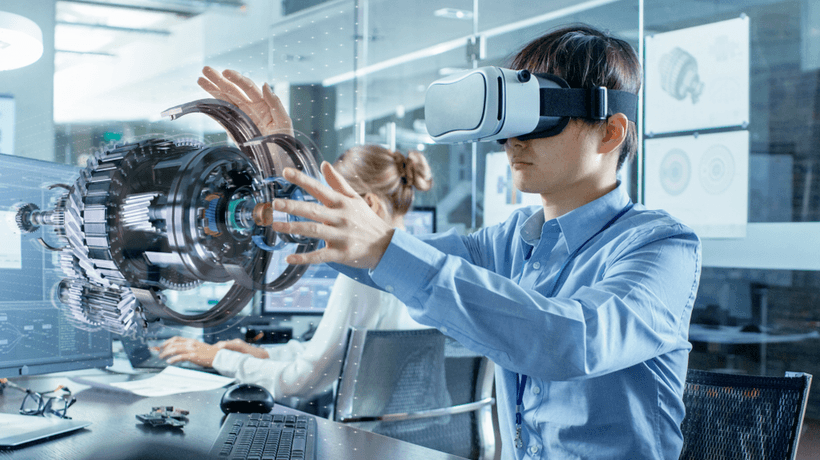How To Introduce Virtual Reality In Your eLearning Courses
The Virtual Reality applied to learning processes has arrived to stay. Now it is time to understand and rationalize its use; this so powerful application is not a simple fad, as it has happened in other occasions in other contexts.
The paradigm shift that we are experiencing in the conceptualization and Instructional Design of the eLearning contents must allow with a minimum guarantees the solid arrival of the Virtual Reality, allowing to work until now unreachable learning with the technological resources available to the Instructional Design professionals.
The irruption of ultra low cost technologies such as the cardboard virtual reality glasses, in some cases for less than $10, is allowing a rapid adoption of Virtual Reality by the general public. For any type of application, in addition, the eLearning factories are offering the possibility to their clients to develop the first eLearning experiences based on Virtual Reality.
Below we identify the 3 most relevant elements to introduce Virtual Reality in your eLearning courses.
1. Choice Of Content To Be Developed In A Virtual Reality Environment
The first experiences we know of Virtual Reality applied to eLearning processes have revolved around the development of very specific skills and knowledge, such as work safety and specific simulators in the field of vocational training. In the educational context, there is a number of examples of the application of Virtual Reality to recreation and immersion in very concrete environments to explain; natural phenomena, planets, animals, human anatomy, etc.
But in the last two years we can find examples of the proliferation of highly immersive learning experiences in the context of skills; speaking in public, teamwork, conflict mediation, treatments and therapies with patients. In short, the Virtual Reality offers us a wide range of possibilities on which to base our project, whether we decide to opt for the development of a competition or a skill.
2. Correctly Guiding The Instructional Design Of The Virtual Reality Experience
The irruption of 360º video in Virtual Reality applications, and in particular in the development of eLearning content, is supposing a revolution not only in reducing the cost of the project with respect to a 3D recreation approach, but also because of the versatility and realism that brings to the virtual experience. This is because it is able to capture any environment, moment, or interaction with a simple 360º video camera, or even with our smartphone, and thus it facilitates the development of immersive experiences very interesting for the student.
The 3D recreation approach defines well the objectives of learning, since it allows to introduce nuances of simulation that 360º video can hardly supply; it is also very important to bet on an Instructional Design with the maximum presence of audiovisual pieces, such as videos or animations, that replace the text, since this format reduces the immersive power and the interaction of the student with the Virtual Reality.
3. Choosing Correctly The Platform Of Distribution Of Content Based On Virtual Reality
In fact, this condition could be point number 1 of this article. If the choice of distribution is based on models of Virtual Reality glasses that connect to a computer, the virtual experience will be very powerful. However, it will totally condition the engagement of the student, as well as affect the budget of the project, since as a general rule the price range of this type of Virtual Reality hardware is more expensive than the option of using Virtual Reality glasses designed to view the contents through a smartphone. On the contrary, the latter possibility requires the development of a mobile application compatible with at least Android devices, IOS, and Windows mobile, with the corresponding economic impact on the project.
The choice must be based on all these parameters; we must know how to maintain an optimal balance between high immersion, mobility, and investment capacity.
Good luck!








![VRoom: Getting Started With VR For Training [eBook Launch]](https://cdn.elearningindustry.com/wp-content/uploads/2022/04/shutterstock_1930856735.jpg)